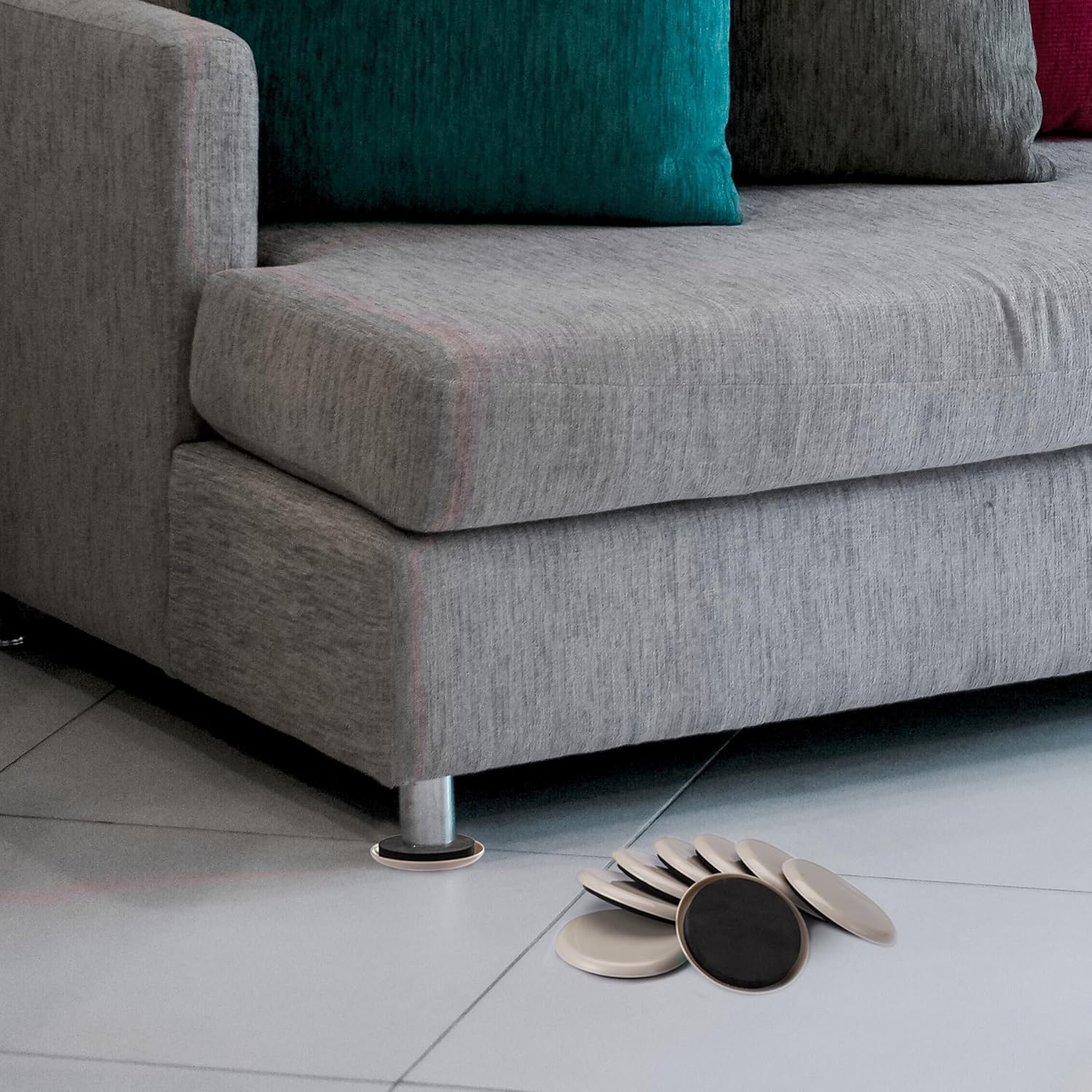Moving Truths: Debunking Myths About Furniture Sliders...
Furniture sliders though small and overlooked, are incredibly useful tools that can make moving heavy furniture a breeze and protect your floors from damage. Despite their benefits, there are many myths surrounding their use and effectiveness. This blog, will debunk some of the most common myths about furniture sliders and provide you with accurate information to help you make the most of these handy devices.
Myth 1: Furniture Sliders Are Only for Moving Heavy Furniture
One myth is that furniture sliders are practical only for moving heavy items like dressers, couches, and large tables. While it’s true that sliders are incredibly helpful for heavy furniture, they are equally useful for lighter pieces. Using sliders makes it easier and more efficient to rearrange furniture, regardless of weight. They can also help prevent back strain and injury by reducing the effort needed to move items.
Picture needing to move a bookcase or a side table. Even though these items might not be as heavy as a sofa, they can still be cumbersome and hard to move without assistance. Sliders reduce friction and make it possible to glide these items smoothly across the floor without lifting. This convenience is especially useful in environments where furniture needs to be rearranged frequently, such as in schools, offices, or even during housecleaning.
Myth 2: Furniture Sliders Damage Floors
Another myth is that furniture sliders can harm floors. The truth is quite the opposite. High-quality sliders are made to protect floors by reducing friction and stopping scratches, dents, and other damage. Sliders made from materials such as felt, plastic, or rubber provide a smooth gliding surface that protects floors. It’s essential to choose the appropriate slider for your flooring—felt sliders for hardwood and tile, and plastic or rubber sliders for carpets.Using the wrong type of slider can cause issues.
For example, using plastic sliders on hardwood floors might lead to scratches, but selecting felt sliders can prevent this. Conversely, felt sliders on the carpet might not provide the best movement and can wear down quickly. Understanding the material compatibility ensures that your floors remain pristine while making furniture movement effortless.
Myth 3: All Furniture Sliders Are the Same
Furniture sliders aren’t all alike, and this myth can cause less-than-ideal results. There are many types of sliders designed for various flooring and furniture types. For example, felt sliders are ideal for hardwood floors, while plastic or rubber sliders work best on carpets. Additionally, some sliders are made for permanent use, while others are meant for temporary use. Choosing the right slider for your specific needs is crucial for optimal performance and floor protection.
Permanent sliders are generally attached to the furniture leg and remain in place, providing consistent protection and ease of movement. Temporary sliders, on the other hand, can be placed under furniture only when needed. This flexibility allows for a more customized approach depending on how often you need to move your furniture and the specific characteristics of your home’s flooring.
Myth 4: Furniture Sliders Are Expensive
Some think that furniture sliders are costly and not worth the investment. However, sliders are very cost-effective, especially considering the potential costs of repairing damaged floors or furniture. A small investment in high-quality sliders can save you time and money in the long run by reducing and preventing damage or the need for professional movers or heavy-lifting gear.
Slider prices are insignificant compared to the cost of floor repair. The cost of refinishing a hardwood floor can be a major expense, reaching into the hundreds and sometimes thousands of dollars. Conversely, sliders might only cost a few dollars, making them a cost-effective option for protecting your flooring investment.
Myth 5: You Don’t Need Furniture Sliders if You Have Carpets
Even though carpets can provide some protection against scratches and dents, they do not eliminate the use of furniture sliders. Heavy furniture can still cause damage to the furniture and carpet itself. Sliders specifically made for carpet work seamlessly on carpeted surfaces, making it easier to move furniture without causing harm.Without sliders, dragging heavy furniture across carpeted surfaces can stretch and distort the fibers, potentially leading to unsightly bulges and premature wear. Carpet sliders have a smooth, firm surface that allows furniture to glide effortlessly over the carpet without causing damage, preserving the carpet’s longevity and appearance.
How to Choose the Right Furniture Sliders

To get the most out of furniture sliders, it’s critical to choose the right type for your specific needs. Here are a few tips:
- Consider the flooring type: Use felt sliders for hard surfaces like tile, wood, and laminate. For carpeted floors, opt for plastic or rubber sliders.
- Check the weight capacity: Make sure the sliders can support the weight of your furniture. Most packaging will indicate the maximum weight capacity.
- Decide between permanent and temporary: If you move furniture frequently, consider permanent sliders that attach to the furniture legs. For occasional moves, temporary sliders work just fine.
Conclusion
Furniture sliders are valuable tools that can make moving and rearranging furniture easier while protecting your floors from damage. By dispelling these common myths, we hope to provide a clearer understanding of how furniture sliders work and their benefits.



